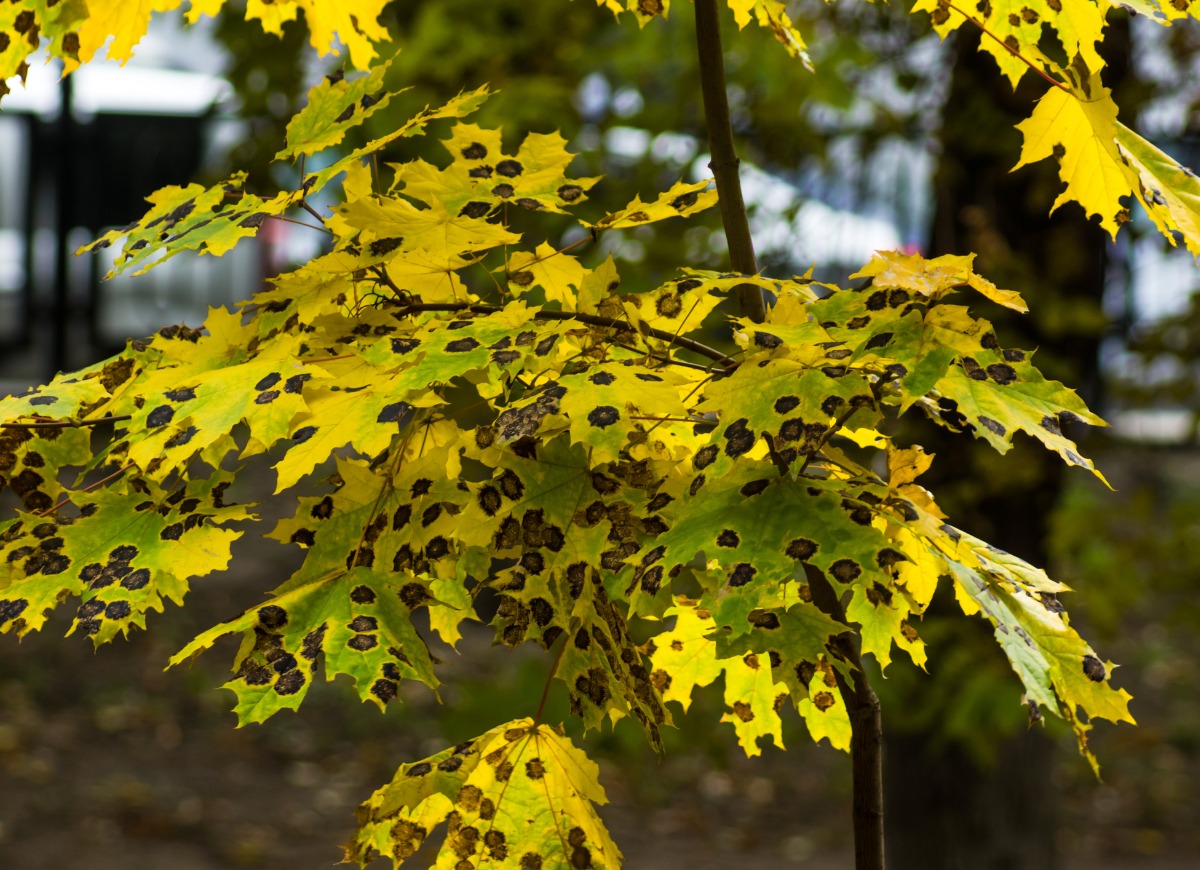

We may earn revenue from the products available on this page and participate in affiliate programs. Learn More ›
Like people, trees can succumb to various diseases. But since trees don’t cry out in pain, they can’t tell humans when something is wrong. It’s up to you to spot and treat a disease before it causes irreparable damage. If a tree becomes diseased, it’s not only a shame. It also can be a potential hazard. Diseased trees can become weak and more vulnerable to severe weather.
Keep sickly trees from toppling into your fence, home, or above-ground pool. Here’s how to treat and prevent common tree diseases.
Related: The 15 Best Trees for Any Backyard
Anthracnose
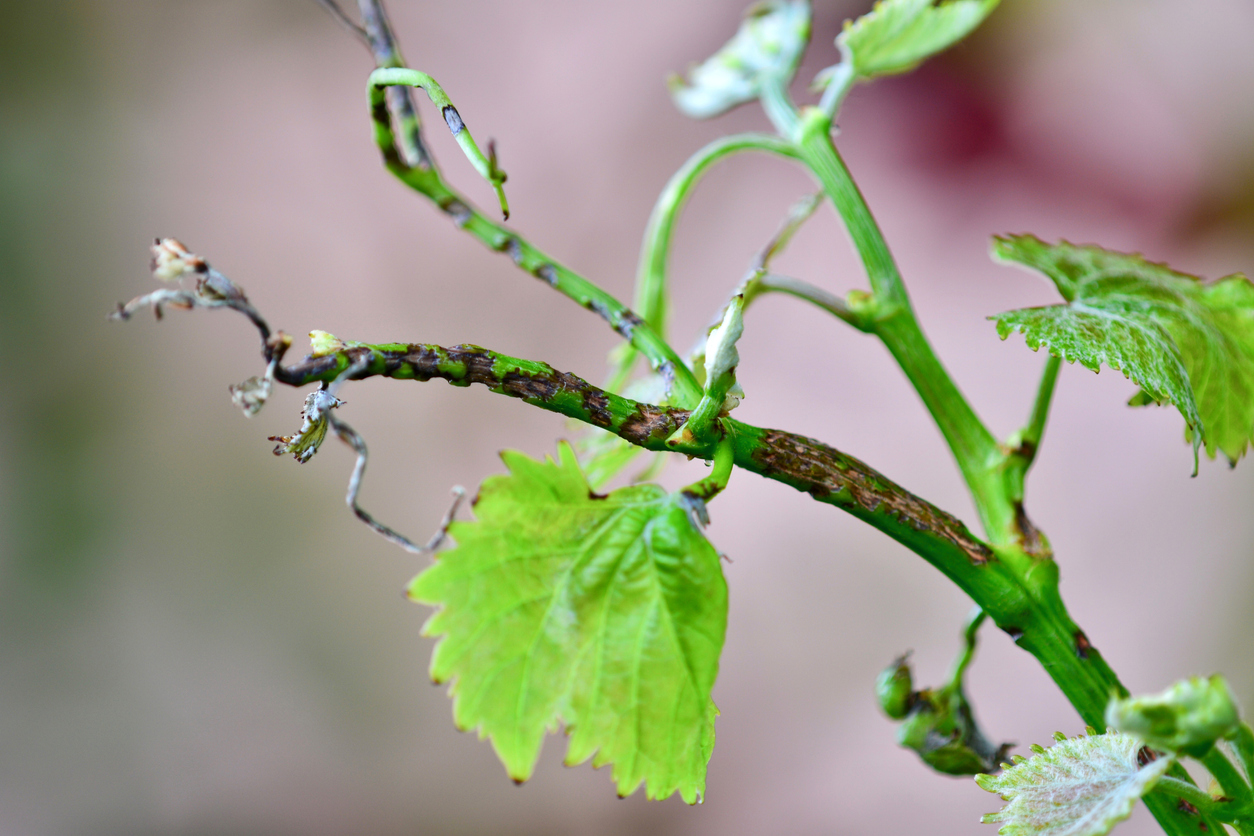
This is one of the most common ailments affecting trees in North America. Some tree species are more at risk, including Modesto ash and American sycamore, so look for resistant varieties. The fungal infection attacks foliage, flowers, fruit, and twigs of trees and shrubs.
Symptoms depend on the species of tree affected, but leaf drop and dense shoot growth are potential signs of anthracnose. Treatment for anthracnose involves removing dead twigs, branches, and infected leaves. The next step is to apply a copper-based fungicide.
Apple Scab
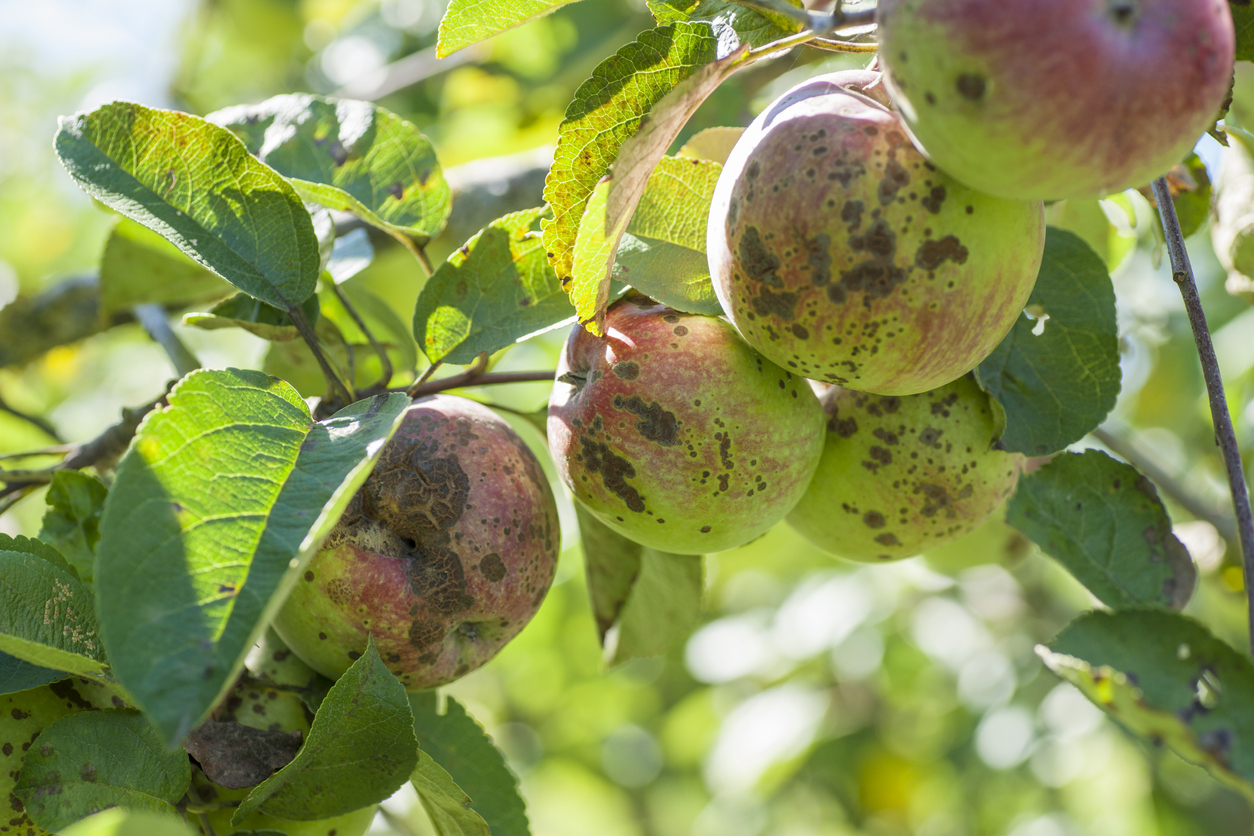
Apple scab is a disease that affects apple and crabapple trees. True to its name, the fungal infection produces lesions with a scab-like appearance on leaves and fruit. Although apple scab isn’t a severe disease, it can still cause a tree to look unappealing and scraggly. Over time, an infected tree also might lose all of its leaves, leading to stress that can make the plant susceptible to other diseases.
Treatment for apple scab involves managing the fungus and its spread by removing and raking dead, infected foliage. For a serious infection, apply fungicide at the start of the season to protect new leaves that emerge. Fungicide is not a cure for apple scab but can prevent further damage to a tree and nearby healthy plants. Ultimately, though, prevention is the best option. To avoid the disease, plant only disease-resistant varieties.
Canker Diseases
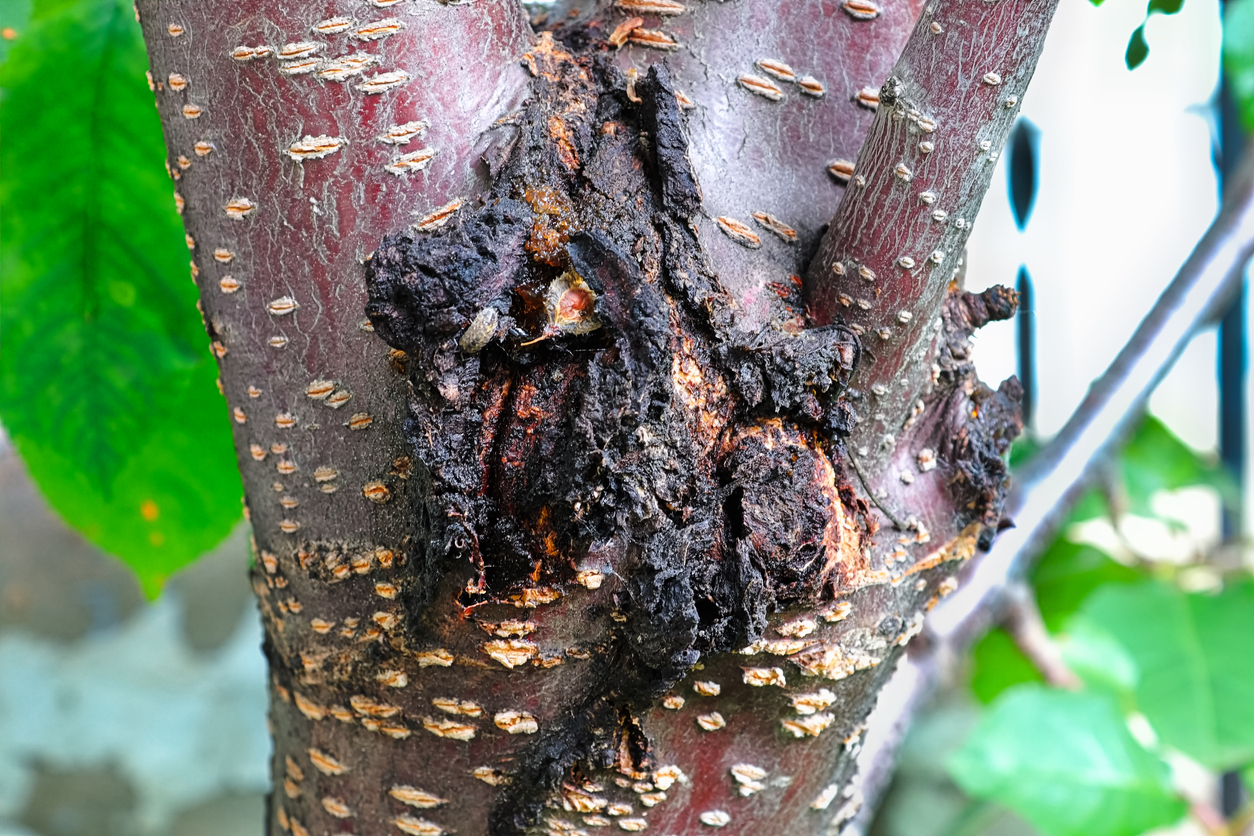
Canker diseases can be fungal or bacterial in origin. Cankers can cause serious structural damage to trees, weakening them so much that branches snap off easily. These elongated lesions often have a reddish tint and can affect branches, twigs, or trunks.
As with apple scab, the best medicine for canker disease is prevention. Choosing disease-resistant and native varieties sets trees up for success. To avoid the spread of the disease in an affected tree:
- Remove diseased branches or twigs.
- Don’t prune in wet weather, as this may encourage the spread of the fungus.
- Call a professional for help if a tree has a large canker in the trunk area.
Cedar-Apple Rust
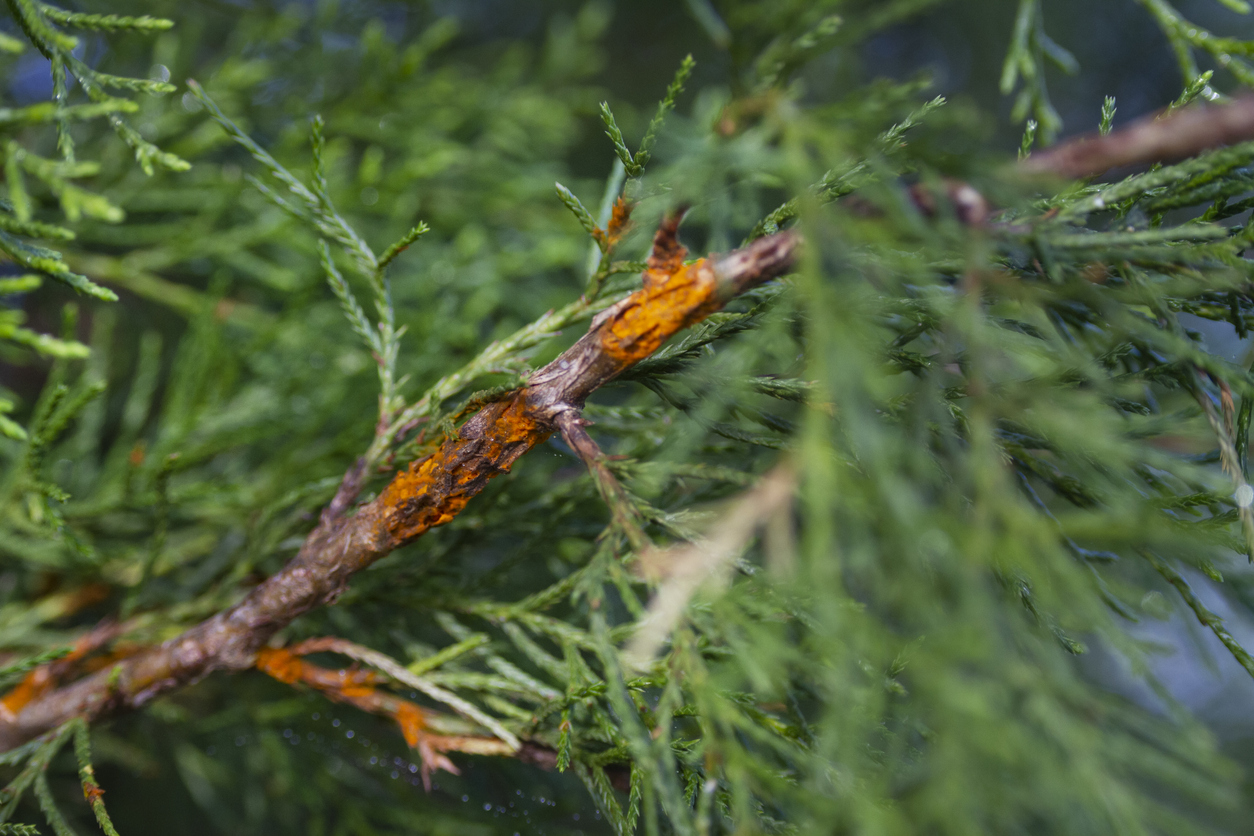
This type of fungal infection won’t kill a tree, but it can severely weaken it. It affects two specific species of trees: Eastern red cedars and apple and crabapple trees. Growths on Eastern red cedars develop and release fungal spores that go on to infect apple trees, causing leaf damage and hindering fruit production.
Removing the growths, called juniper galls, that spread the spores is one way to control the spread of the fungus. Preventive spraying with fungicide, liquid copper, or bio fungicides—especially if the disease is common in your area—can prevent the spores from affecting apple trees.
If apple trees are already showing signs of cedar-apple rust, it’s no longer possible to control the fungal infection. The only thing left to do is remove infected leaves to stop the fungus from spreading anew. Other preventive measures include avoiding planting juniper species near apple trees and planting disease-resistant cultivars.
Diplodia Tip Blight
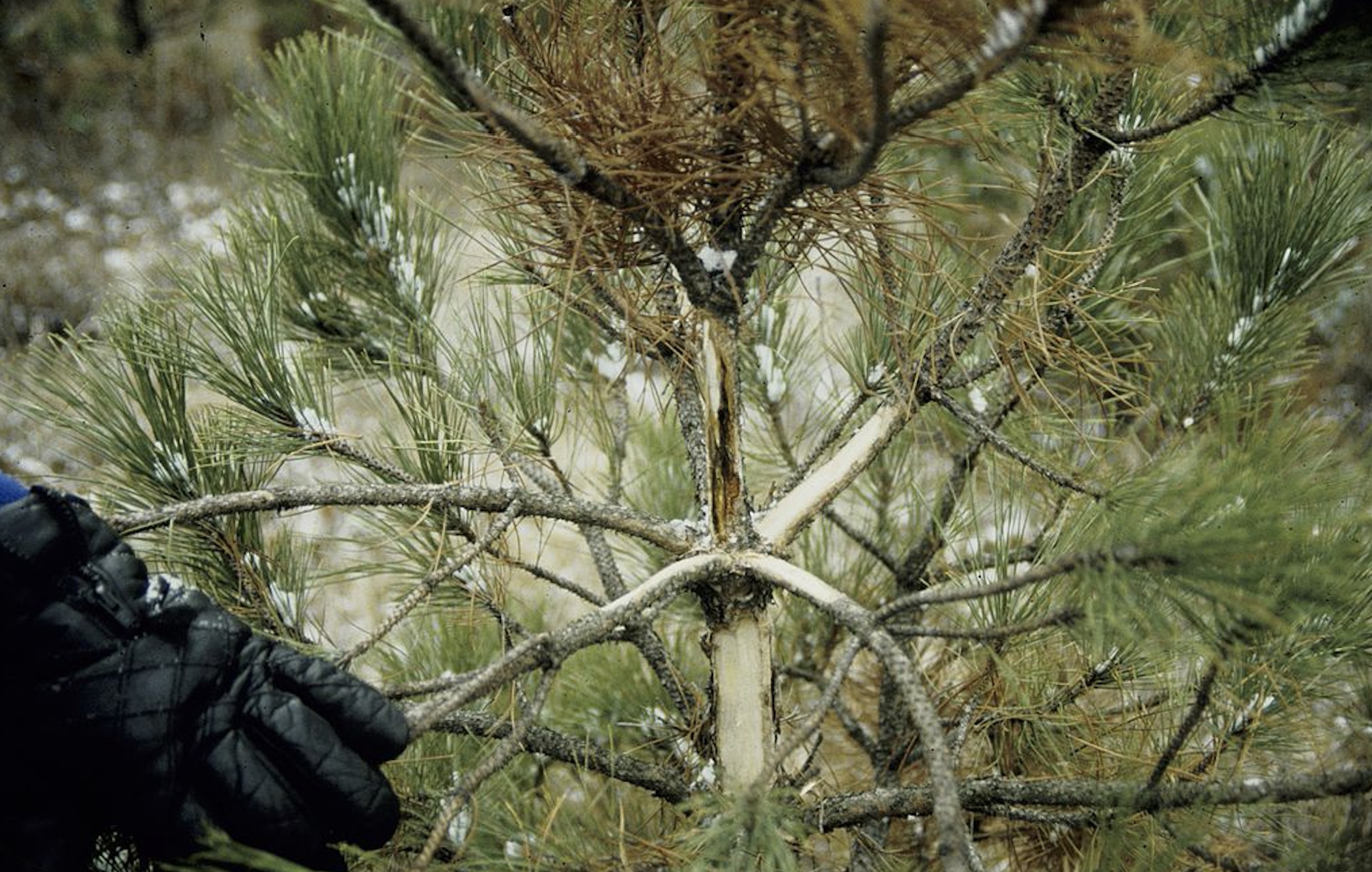
This fungal disease primarily affects mature conifers. Infections are more likely in trees that have experienced stress of some kind, whether due to poor soil or adverse weather conditions. The disease produces very small black growths that appear on needles and pine cones. These growths eventually spread fungal spores, so removing them can prevent the spread of the disease.
Treatment with fungicides is effective for this type of infection. The best time to spray is in the spring, right when buds are starting to emerge.
Related: 7 Types of Pine Trees That are Great for Home Landscapes
Dothistroma Needle Blight
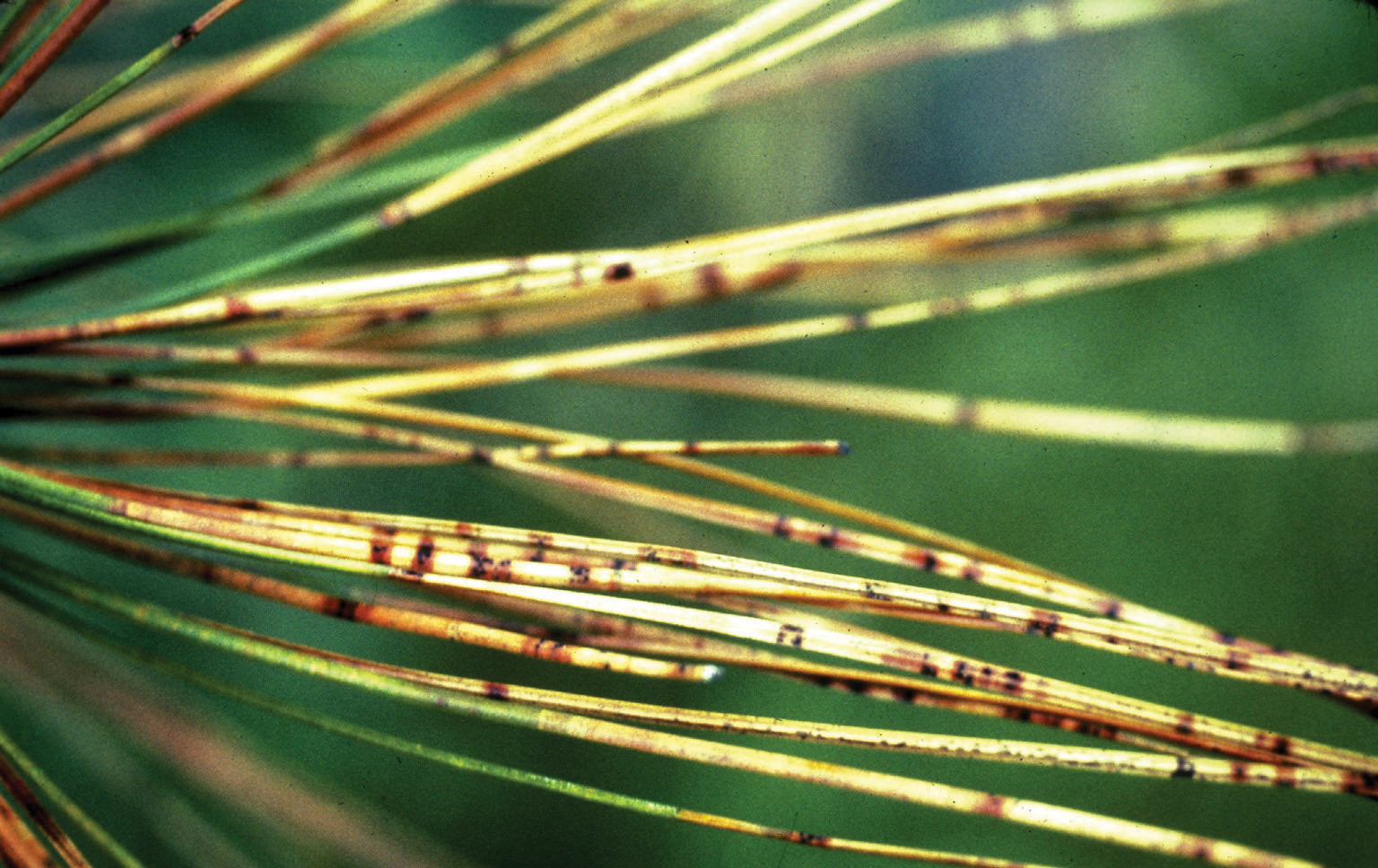
This is another disease that affects pine trees and causes needle loss. If an infection is left untreated, affected trees may die. Signs of the disease include the browning of needles, primarily on the lower half of the tree. Austrian and ponderosa pines are most susceptible to serious damage from this disease.
Planting disease-resistant varieties and ensuring that plants have enough air circulation can help prevent this type of blight from infecting pine trees. To treat existing needle blight, apply copper fungicides before buds open in the spring and again when new needles have reached their full size.
Fire Blight
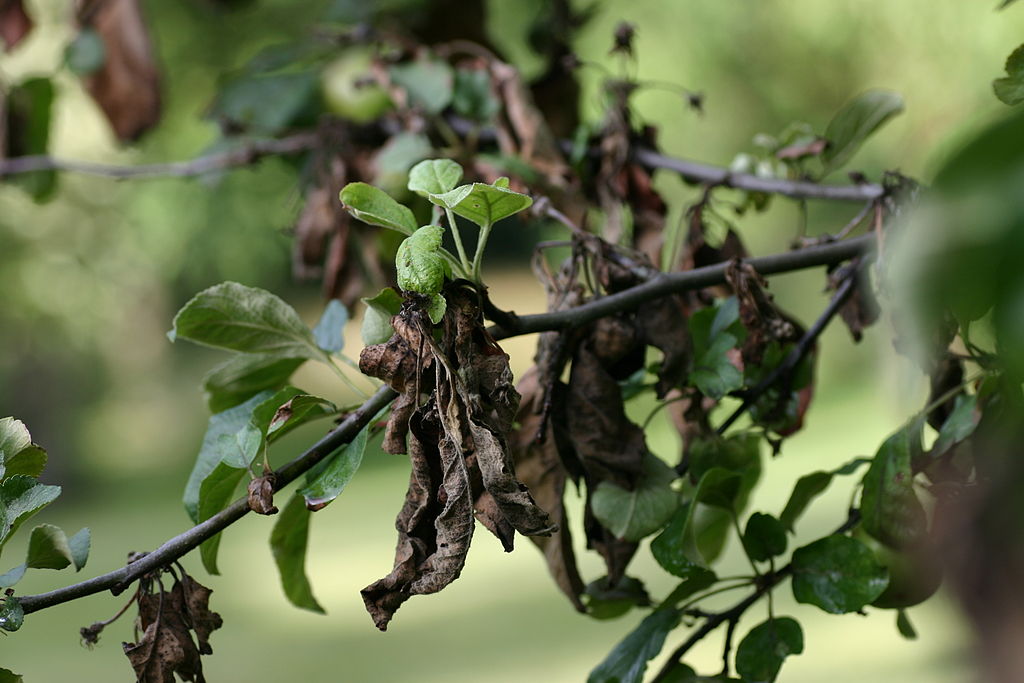
Fire blight commonly affects apple and pear trees. The bacterial infection attacks blossoms to start, then eventually causes cankers and rapidly wilting shoots. As with other types of blight, there’s no cure for fire blight. To prevent the spread of the disease, remove cankers when the plant is dormant. Pruning affected stems and branches also helps with control. Bacterial sprays may help prevent the bacteria from surviving and spreading. Still, there’s no guarantee that spraying your tree with chemicals will rectify the problem.
